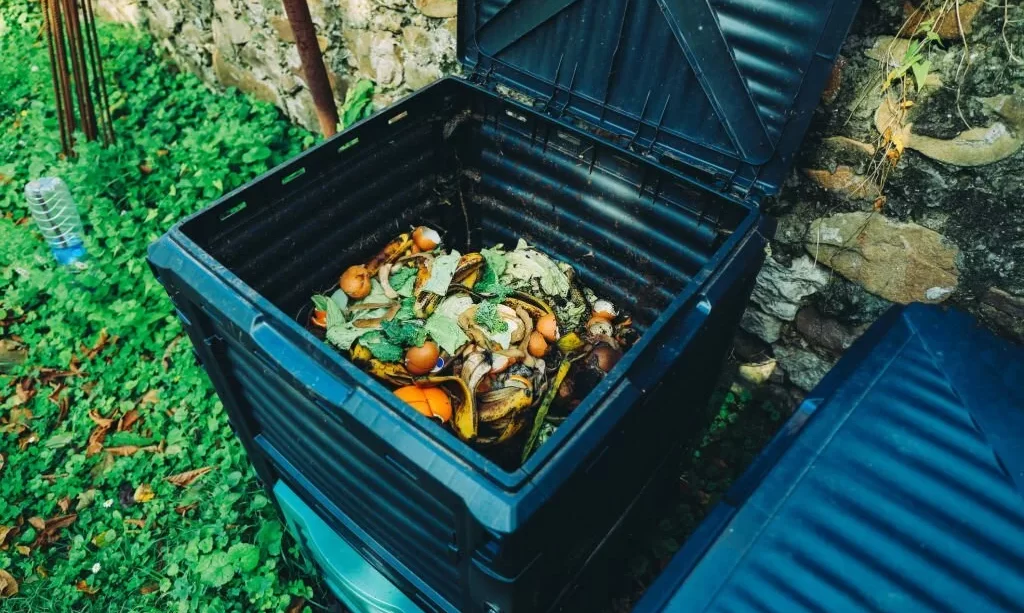Composting is a sustainable and eco-friendly practice that allows you to reduce waste while enriching your garden soil. It’s a win-win for both your household and the environment. But when it comes to composting, questions often arise about what can and cannot be added to the pile. One common query centers around pistachio shells: can you compost them? In this article, we’ll explore the world of composting pistachio shells, offering insights into the ins and outs of responsible composting. Understanding the basics of composting and the role pistachio shells play in this process is the first step toward making informed decisions about your compost pile.
- ✅Speed Up Composing Process: More advanced models use rotating to bring oxygen to the center of the bin and paddles inside the chamber to help mix and aerate the composting materials when turned. These improvements or modifications are designed for one reason: to speed the composting process.
- ✅How do Compost Tumblers work? Simple. You load them with green and brown waste from your yard and kitchen. When full, you give them time to work, in other words, heat up. Turning a compost pile mixing the organic materials and the organisms it contains with heat-producing oxygen is the traditional method of keeping the process going full steam. By turning the tumbler, the organic materials are mixed and infused with fresh oxygen.
- ✅Easy to Access Finished Compost: Just Slide the door open and take the organic fertilizer out when the compost is ready. When a check reveals the compost is complete —and this can happen in a matter of weeks —the same access that allowed you to fill the tumbler lets you empty it. Now is the time to spread the results.
- ✅Dual-Bin Design: The dual bin design takes a different approach to the continuous-use composted concept, Two bins are set side-by-side into a single rotating chamber. Thickly insulated compartments conserve the heat generating by the decaying matter, and this greatly speeds the process. This design also allows you to add food waste to one chamber while the other is composting.
- ✅Totally Organic and Money-Saving: If you’re looking for a fast, convenient way to compost your kitchen throw-outs, grass clippings, and organic yard waste, our outdoor kitchen compost bin is just right for you! The Compact Compost Tumbler quickly recycles it into nutrient-rich compost.
Composting Basics
Before we delve into the specifics of composting pistachio shells, it’s essential to establish a solid foundation in composting basics. Composting is a natural process of decomposing organic materials like kitchen scraps and yard waste into nutrient-rich humus, which serves as a valuable soil conditioner. This process mirrors nature, where microorganisms, bacteria, and fungi break down organic matter over time.
In your compost pile, a balance of “green” and “brown” materials is crucial. “Green” materials include items like fruit and vegetable scraps, coffee grounds, and grass clippings, which provide nitrogen and moisture. “Brown” materials, such as dry leaves, straw, and shredded newspaper, contribute carbon and help maintain the right carbon-to-nitrogen ratio. Microorganisms responsible for decomposition thrive in this balanced environment, turning organic materials into a dark, crumbly substance known as compost, rich in nutrients that benefit your plants.
With this foundational knowledge of composting, we can now explore whether pistachio shells have a place in this eco-friendly process.
Pistachio Shells in Compost – Yes or No?
Now, let’s address the central question: Can you compost pistachio shells? The answer is generally yes, but it comes with a few considerations. Pistachio shells are organic materials, and as such, they can be added to your compost pile. However, they present some unique challenges. Pistachio shells are tough and slow to decompose due to their hard, woody nature. Their slow decomposition can disrupt the overall balance and efficiency of your compost pile.
Despite these challenges, there are valid reasons to consider composting pistachio shells. When they eventually break down, they release valuable nutrients into the compost, enhancing its nutrient content. So, if you’re willing to exercise patience and take additional steps, you can successfully compost pistachio shells while reaping the benefits of nutrient-rich compost.
Tips for Composting Pistachio Shells
If you’ve decided to include pistachio shells in your compost pile, here are some tips to ensure the process goes smoothly:
1. Crush or Shred Them: To accelerate decomposition, it’s advisable to crush or shred pistachio shells into smaller pieces. This increases the surface area exposed to the composting process and can significantly speed up the breakdown.
2. Balance the Ratios: Since pistachio shells are high in carbon, you should balance their addition with more nitrogen-rich “green” materials. Add extra green materials like kitchen scraps, grass clippings, or coffee grounds to maintain the proper carbon-to-nitrogen ratio in your compost pile.
3. Mix Them Well: Incorporate the crushed pistachio shells evenly throughout your compost pile to prevent them from clumping together. A well-mixed pile ensures a consistent breakdown of all materials.
4. Be Patient: Slow decomposition is typical with pistachio shells, so be prepared to exercise patience. Regularly turn or aerate your compost pile to provide oxygen to the microorganisms, which helps speed up the decomposition process.
By following these tips, you can successfully compost pistachio shells while maximizing the benefits they offer to your garden soil. The key is to be patient and proactive in managing their slow decomposition and nutrient release.
Alternatives for Handling Pistachio Shells
For those who prefer not to include pistachio shells in their compost pile due to concerns about slow decomposition or potential disruptions, there are alternative methods for responsible disposal:
1. Creative Crafts: Pistachio shells have a unique shape and texture, making them a great material for crafting. You can use them in various art projects, like making jewelry, decorative items, or even unique garden markers. This way, you can upcycle the shells and add a creative touch to your home or garden.
2. Garden Path Mulch: Crushed pistachio shells can be used as a decorative mulch for garden paths. They provide a visually appealing and natural look while also acting as a weed barrier. The slow decomposition is less of an issue when they are used in this manner.
3. Recycling: Some areas offer recycling programs that accept pistachio shells along with other organic materials. Be sure to check with your local recycling facilities to see if this option is available in your area.
Troubleshooting Common Issues
When considering composting pistachio shells or using alternative methods, it’s important to be aware of common issues and how to address them:
1. Slow Decomposition: As previously mentioned, pistachio shells decompose slowly. To address this issue, ensure they are well-crushed and mixed into your compost pile. Regularly turning or aerating the pile can also help.
2. Odor: While pistachio shells themselves don’t produce strong odors, the slow decomposition might cause other compost materials to break down more slowly, potentially leading to odor issues. Maintain the proper carbon-to-nitrogen ratio and provide good aeration to reduce odors.
3. Pest Attraction: Slow decomposition can also attract pests, so make sure your compost pile is well-contained and, if needed, employ pest prevention methods such as adding a secure lid to your compost bin.
Conclusion
In conclusion, whether you choose to compost pistachio shells or explore alternative methods of handling them, responsible disposal is key. The slow decomposition of pistachio shells can be managed with patience and proper techniques.
Pistachio shells can be creatively repurposed in craft projects or as garden mulch, allowing you to benefit from their unique properties while avoiding potential disruptions in your compost pile. Remember that composting, in all its forms, is a sustainable practice that contributes to waste reduction and soil enrichment. Whichever approach you decide on, you’re taking a step towards a more environmentally friendly and sustainable lifestyle.




